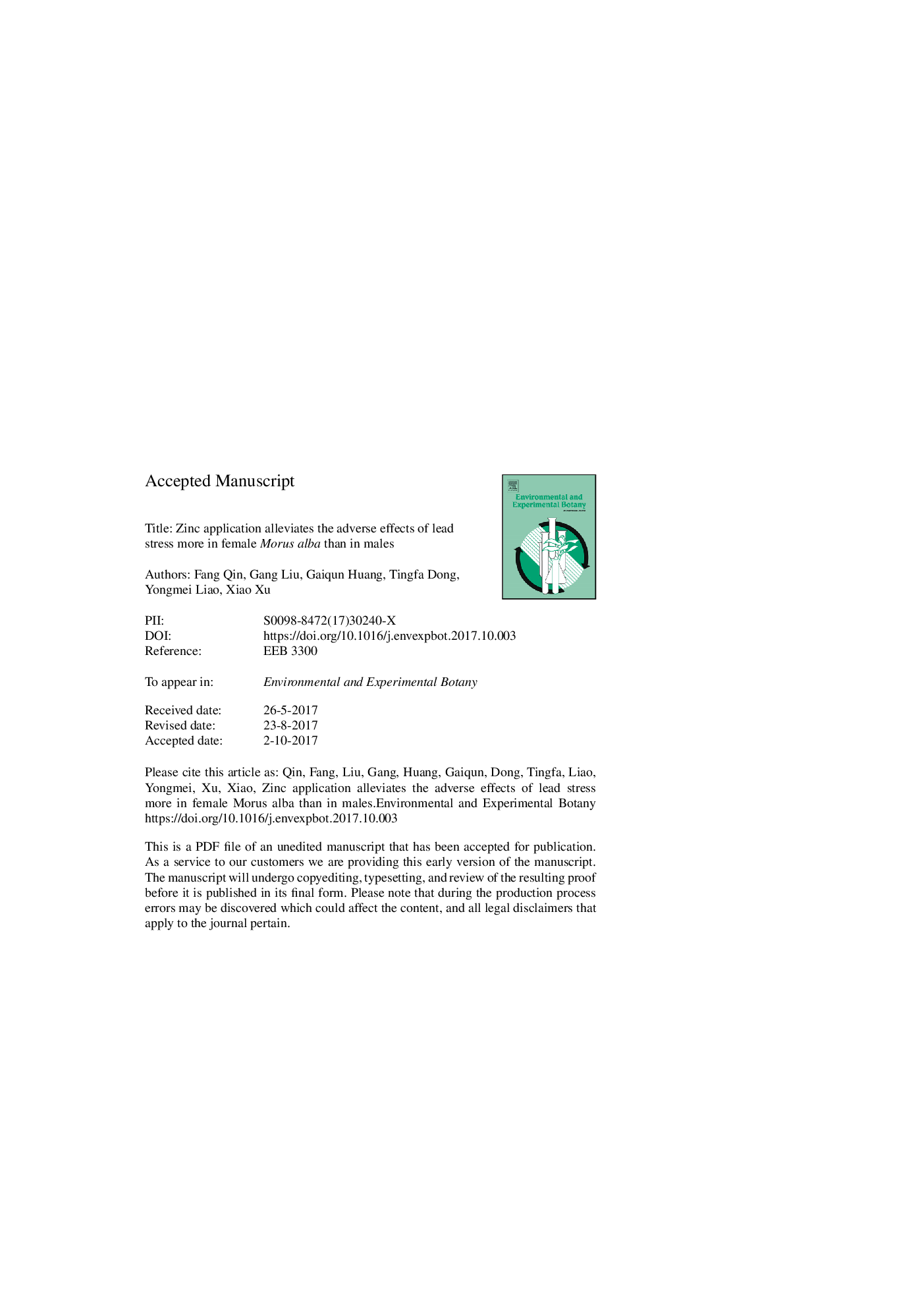| کد مقاله | کد نشریه | سال انتشار | مقاله انگلیسی | نسخه تمام متن |
|---|---|---|---|---|
| 8887138 | 1628031 | 2018 | 40 صفحه PDF | دانلود رایگان |
عنوان انگلیسی مقاله ISI
Zinc application alleviates the adverse effects of lead stress more in female Morus alba than in males
ترجمه فارسی عنوان
کاربرد روی از عوارض جانبی استرس سرب را بیشتر در موروس آلبا کاهش می دهد نسبت به
دانلود مقاله + سفارش ترجمه
دانلود مقاله ISI انگلیسی
رایگان برای ایرانیان
کلمات کلیدی
موضوعات مرتبط
علوم زیستی و بیوفناوری
علوم کشاورزی و بیولوژیک
بوم شناسی، تکامل، رفتار و سامانه شناسی
چکیده انگلیسی
The effects of heavy metal stress on growth in dioecious plants have been reported in some species, but little attention has been paid to lead and zinc contamination. To investigate sex-related morphological, physiological and ultrastructural responses to lead and zinc contamination in dioecious plants, mulberry (Morus alba L.) saplings were subjected to Pb treatments (0 and 1000 mg kgâ1 dry soil) and Zn treatments (0 and 50 mg kgâ1 dry soil) for 3 months. Compared with the control, lead stress inhibited plant growth, decreased plant biomass, suppressed gas exchange, and visibly disrupted antioxidative enzymes in both sexes, particularly in females. Male saplings showed the following effects when exposed to lead stress alone and to a combination of lead and zinc: greater growth, biomass, gas exchange capacity, antioxidant enzyme activity and lead uptake in stems; lower malondialdehyde (MDA) content and relative electrolyte leakage; and relatively intact chloroplast ultrastructures. With the application of zinc, lead toxicity was mitigated through the recovery of gas exchange capacity, increasing growth and biomass, and improved redox imbalance in both sexes. Moreover, the net photosynthetic rate, stomatal conductance, glutathione reductase (GR) activity, lead uptake in roots and leaves, MDA and relative electrolyte leakage increased more in females than in males. Therefore, these results indicate that females are more sensitive to lead stress, and zinc application can mitigate lead toxicity and exhibit a stronger effect in female plants than in males.
ناشر
Database: Elsevier - ScienceDirect (ساینس دایرکت)
Journal: Environmental and Experimental Botany - Volume 146, February 2018, Pages 68-76
Journal: Environmental and Experimental Botany - Volume 146, February 2018, Pages 68-76
نویسندگان
Fang Qin, Gang Liu, Gaiqun Huang, Tingfa Dong, Yongmei Liao, Xiao Xu,
